blends the ordinary with the extraordinary
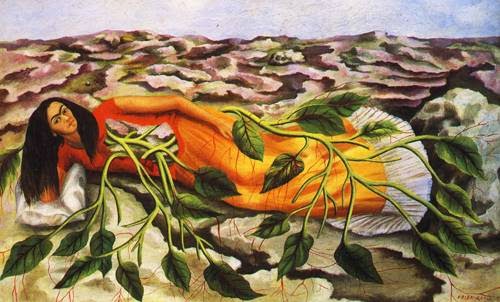
In the vibrant tapestry of art history, few names resonate as powerfully as Frida Kahlo. Her striking self-portraits and vivid depictions of pain, passion, and identity have captivated audiences worldwide. But where does her unique style fit within the broad spectrum of art movements? One compelling perspective is to view Frida Kahlo’s work through the lens of magical realism.
The essence of Magical Realism
Magical realism is an art and literary style that blends the ordinary with the extraordinary, infusing everyday scenes with elements of magic and wonder. This genre, first coined by German art critic Franz Roh in 1925, highlights the surreal and fantastical aspects of our reality, without fully departing from it. Unlike surrealism, which delves into the unconscious and dreams, magical realism roots itself in the real world, emphasizing its inherent strangeness.
Frida Kahlo: A confluence of realism, surrealism, and magic
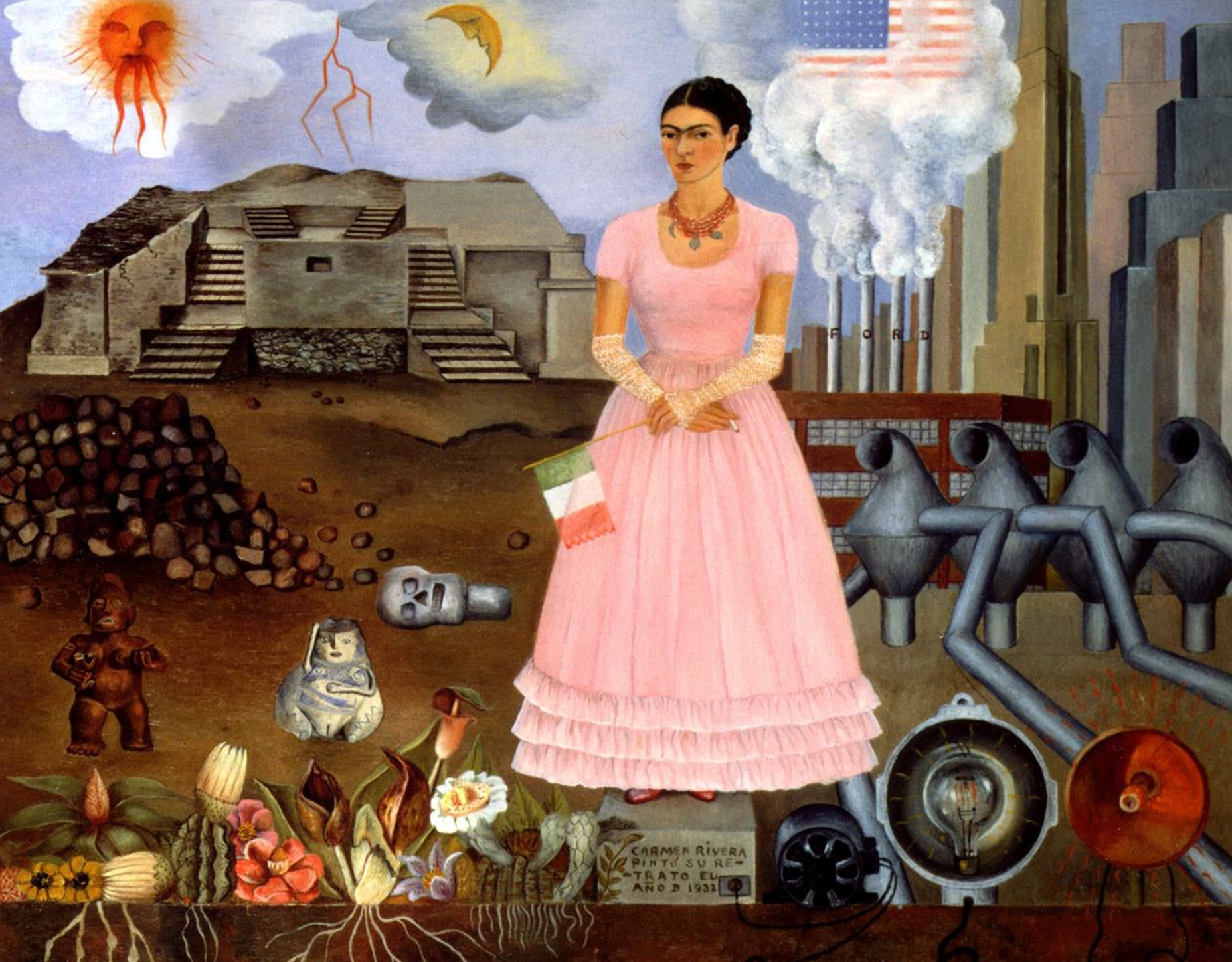
Frida Kahlo’s paintings are often classified under magical realism due to their extraordinary blend of realistic detail and fantastical elements. However, although Kahlo famously stated, “I never painted dreams. I painted my own reality,” her art unmistakably incorporates magical elements that transcend the mundane.
Take, for instance, her renowned self-portraits. These works are grounded in personal and physical reality, often portraying her own experiences and suffering. Yet, they also feature surreal and symbolic elements—floating hearts, roots growing from her body, and eerie, dreamlike backdrops—that push the boundaries of realism.
The magic in Kahlo’s reality
Kahlo’s “Self-Portrait with Necklace” (1933) exemplifies this blend. The painting’s meticulous detail and photographic clarity anchor it in the real world, but the surrounding flora, fauna, and mystical ambiance introduce a layer of magic. This juxtaposition invites viewers to perceive the world through a more enchanted lens, recognizing the magic in the mundane.
Her tumultuous life, marred by a devastating bus accident, constant physical pain, and a stormy marriage to fellow artist Diego Rivera, also plays into this narrative. Kahlo’s portrayal of her pain is raw and unflinching, yet it is imbued with a surreal beauty that elevates her personal struggles into universal symbols of resilience and transformation.
Frida Kahlo’s artworks often exemplify the essence of magical realism through their blend of reality and fantasy, imbued with rich symbolism and cultural references.
infusing everyday scenes with elements of magic and wonder
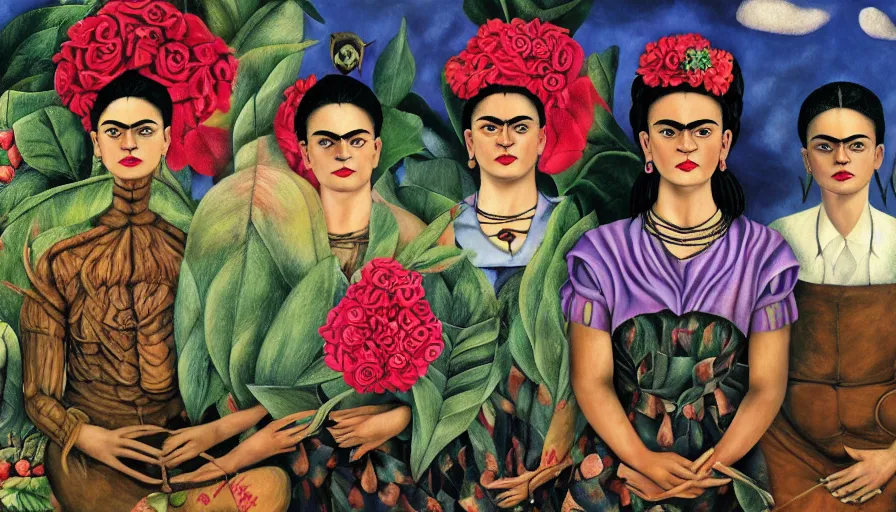
Cultural roots and symbolism
Kahlo’s work is deeply rooted in Mexican culture and filled with symbolism. For example, she blends traditional Mexican motifs, historical artifacts, and natural elements into her paintings. As a result, her work feels both magical and authentic.
The magical realist elements in her art highlight the mystique of everyday life in Mexico. In addition, they draw on the country’s rich myths, legends, and traditions. By doing this, Kahlo’s art goes beyond the personal. It explores broader themes of identity, culture, and the human experience.
The legacy of Kahlo’s magical realism
Kahlo’s influence extends far beyond her lifetime. Her work became more widely recognized in the 1970s, thanks in part to feminist scholars and the Chicano civil rights movement, which celebrated her as an icon. Today, her art continues to inspire and captivate new generations, demonstrating the enduring power of magical realism.
Her paintings remind us that the line between the ordinary and the extraordinary is often blurred. In fact, in Kahlo’s hands, reality is not just lived but felt deeply. Moreover, through her art, she reveals the magic that lies within our own realities.
Frida Kahlo’s work stands as a testament to the power of magical realism. By infusing her deeply personal experiences with elements of fantasy and surrealism, she has created a body of work that is both intensely real and profoundly magical. Whether viewed as a surrealist or a magical realist, Kahlo’s art continues to resonate, inviting us all to see the magic in our everyday lives.
Magical realism through the blend of reality and fantasy, imbued with rich symbolism and cultural references:
Kahlo portrays herself as a stag with a human face, pierced by multiple arrows, lying wounded in a forest. The serene, almost resigned expression on the deer’s face contrasts sharply with the physical torment depicted. This surreal image, rich with symbolism about pain, fate, and transformation, highlights the magical realist approach of combining reality with fantastical elements.
“The Wounded Deer” (1946)
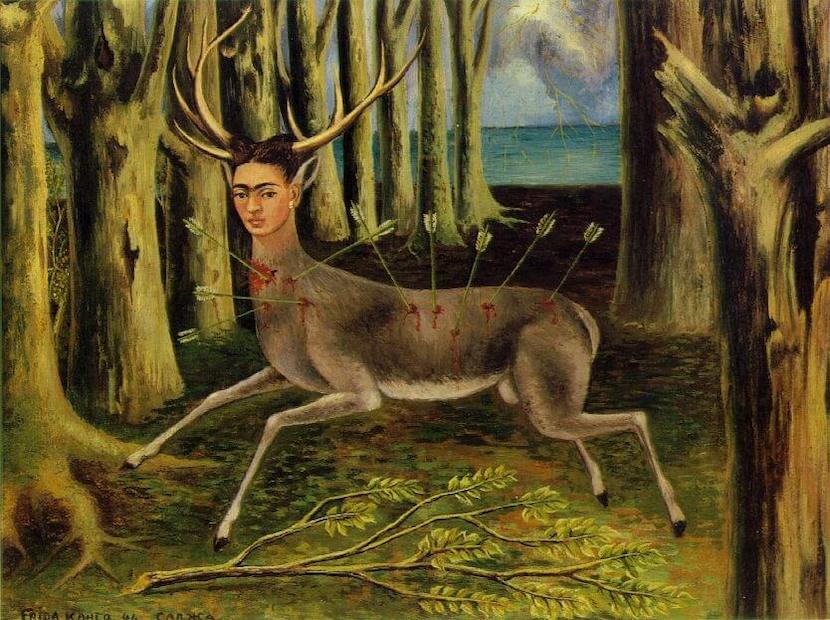
This surreal image, rich with symbolism about pain, fate, and transformation, highlights the magical realist approach. Specifically, it combines reality with fantastical elements.
My Grandparents, My Parents, and I (Family Tree)” (1936)
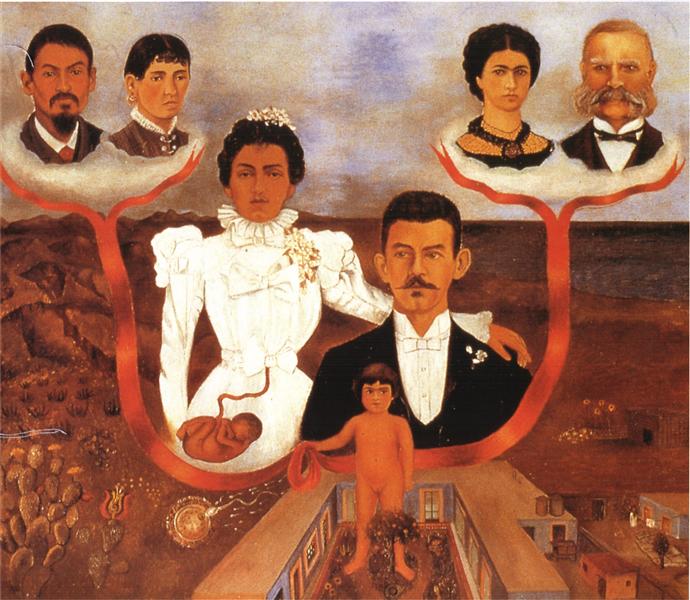
In this detailed and imaginative family tree, Kahlo represents her lineage through symbolic and surreal imagery. She includes portraits of her grandparents in the sky, her parents in the middle ground, and herself as a child in the foreground. The blending of different generations, set against a surreal landscape, captures the essence of magical realism.
These artworks not only display Kahlo’s technical skill but also her ability to infuse her personal experiences with broader cultural and mythical themes, creating a body of work that resonates deeply with the principles of magical realism.